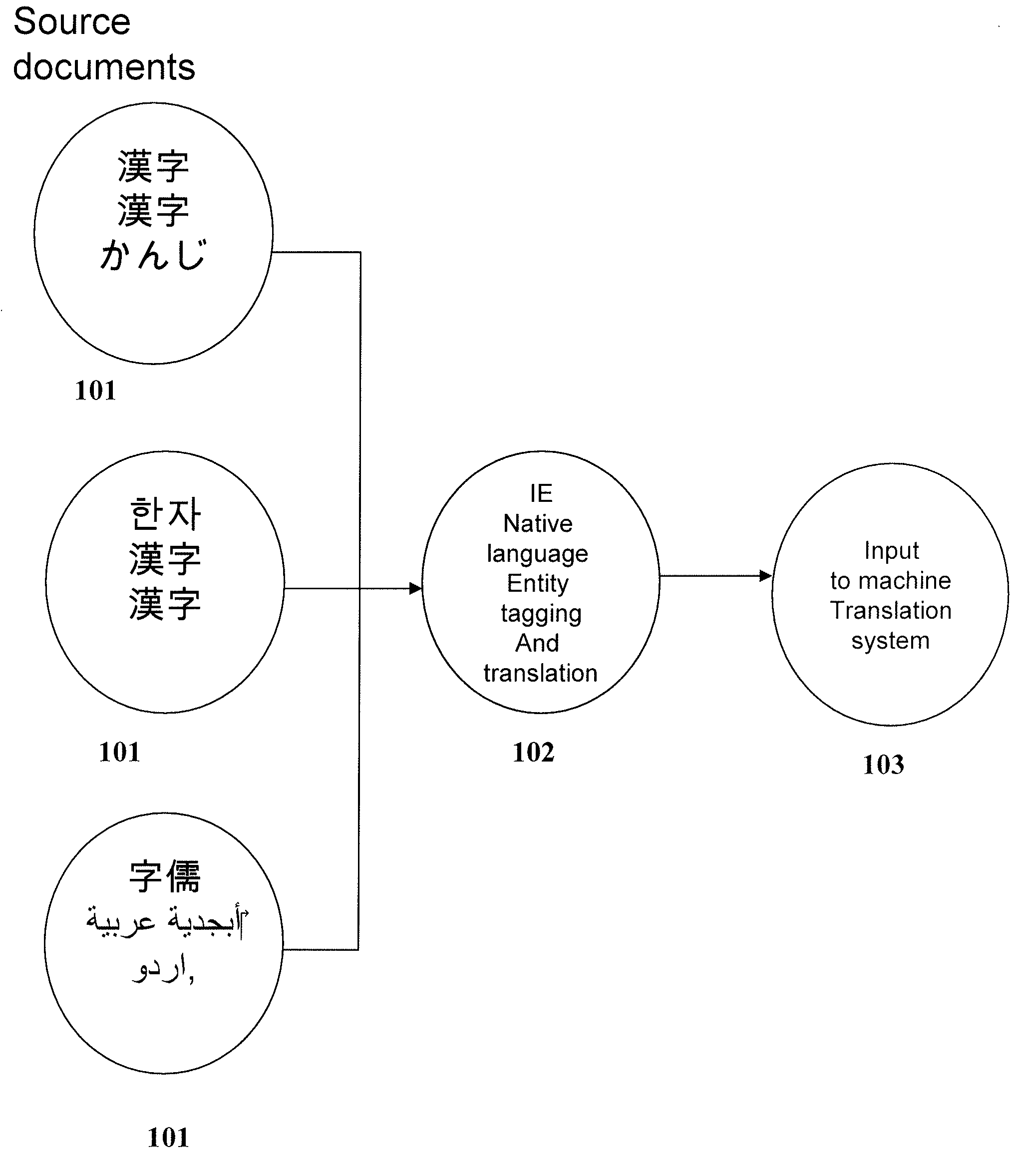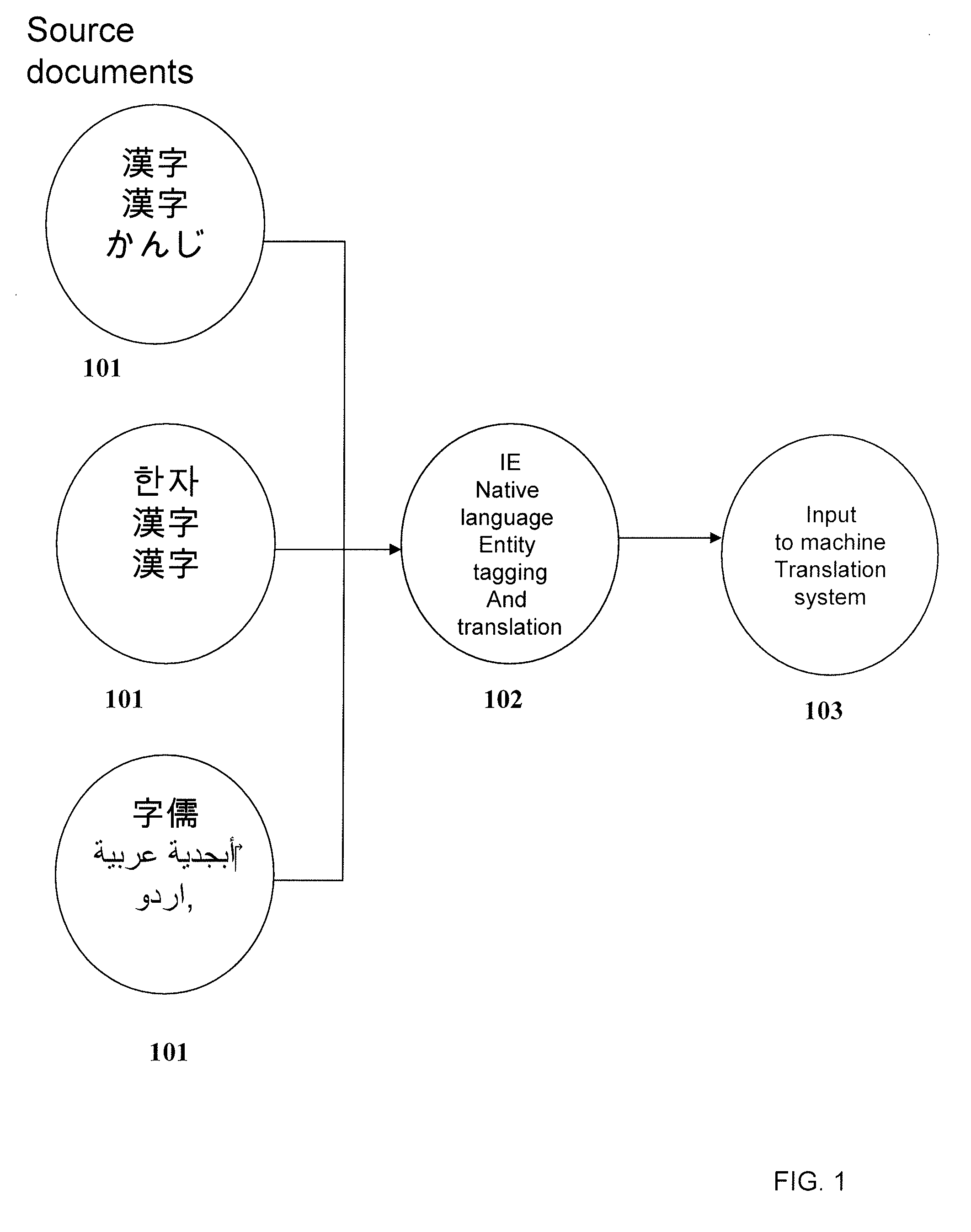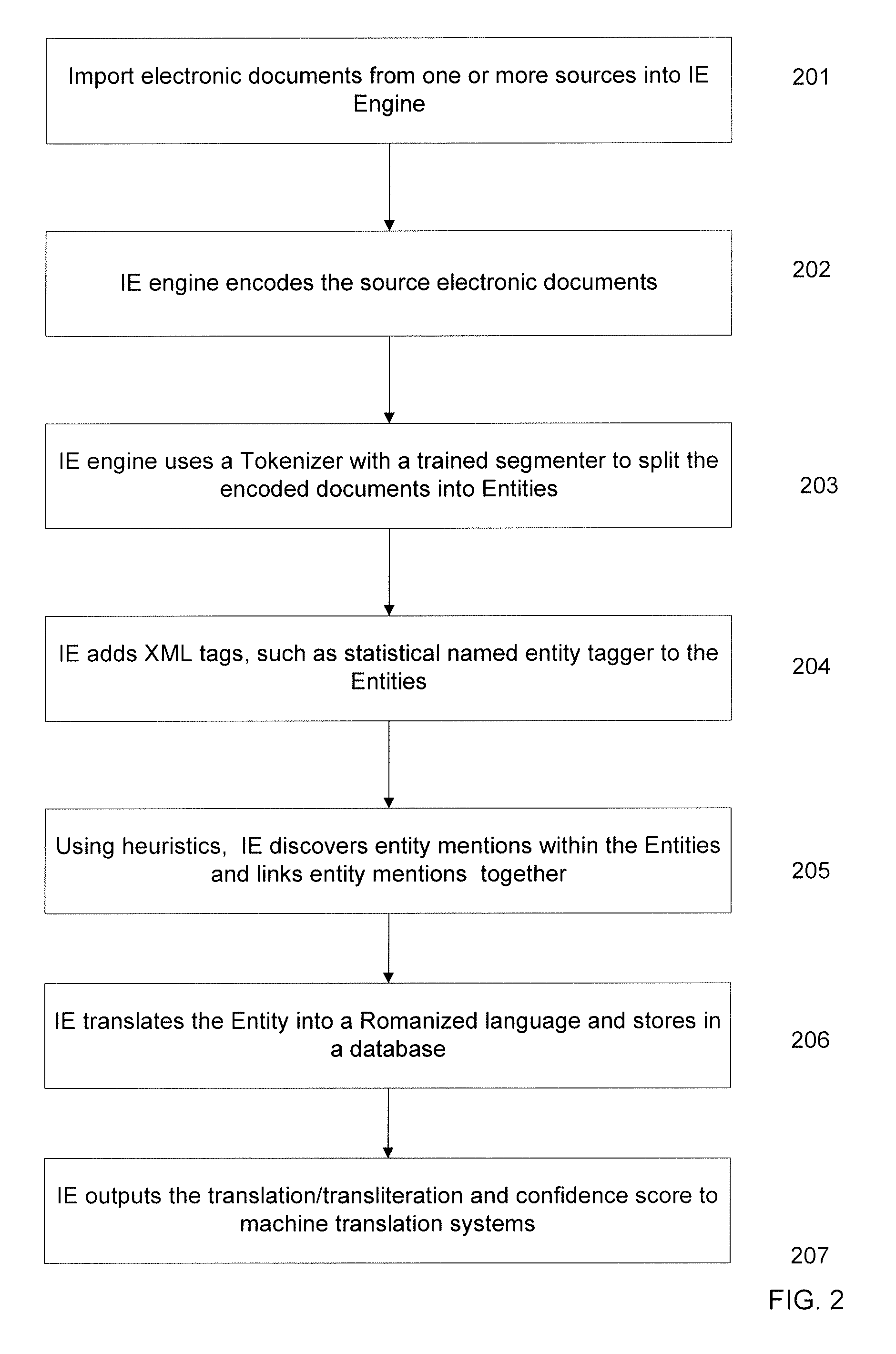Context aware back-transliteration and translation of names and common phrases using web resources
- Summary
- Abstract
- Description
- Claims
- Application Information
AI Technical Summary
Benefits of technology
Problems solved by technology
Method used
Image
Examples
example 1
[0073]In one example, the processes illustrated in FIG. 2, may be implemented by the computer program 301 for improving the translation, transliteration or back-transliteration of Chinese into a Romanized language such as English. In this example, the original Chinese sentence 701 can be roughly translated to the English sentence 703. Using machine translation systems to translate a Chinese sentence 701 results in the English sentence 702. Here, the machine translation system literally translates the characters in the name “Jansa” as “the sand blowing” instead of treating it as a name. The machine translation system finds the EC president as a name, but doesn't have a translation so it Romanizes it based on the pronunciation of the characters. Preprocessing with the Context Aware Translation System, however, improve the accuracy of the machine translation system. The Context Aware Translation System's output 601 for the Chinese sentence 701 may be substituted for the original Chines...
example 2
[0077]In another example, the computer program 301 may be directed towards articles from China scientific journals such as the Chinese Journal of Computers and the ACTA AERONAUTICA ET ASTRONAUTICA SINICA. The articles from these journals may be categorized by the Chinese Library Classification (CLC) system (also known as the Classification for Chinese Libraries). The CLC may be the national library classification system scheme used in China. The CLC system may be hierarchical, starting off with 22 high-level categories such as Literature or Medicine which are then further subdivided into smaller and smaller sub-categories. For example, in the CLC call number V221.2, the V relates to “Aviation and Aerospace”, V2 may mean “Aviation”, V22 may mean “Aircraft Structure and Design,” and so on. With the Context Aware Translation System, document 303 classification may be as specific or general as needed. The documents 303 may have been categorized into various topic areas using a supervise...
example 3
[0092]In a further example, the processes illustrated in FIG. 2, may be implemented by the computer program 301 for improving the translation, transliteration or back-transliteration of Arabic entities to a Romanized language such as English as illustrated in FIG. 10. The computer program 301 received an input from electronic documents 303 containing Arabic entities 307. The computer program 301 classified the entities 307 based on the native orthographic origin of each entity. In some alternatives, the computer program 301 may apply a Bayesian or Nairve-bayes classifier using n-grams of the characters or letters in the entities 307.
[0093]The computer program 301 may contain a module that can provide transliteration for an input from electronic documents 303 containing Arabic entities 307 into another Romanized target language, using probabilities of how likely one or more graphemes in the source language will map to one or more graphemes in the target language and also a list of en...
PUM
 Login to View More
Login to View More Abstract
Description
Claims
Application Information
 Login to View More
Login to View More - R&D
- Intellectual Property
- Life Sciences
- Materials
- Tech Scout
- Unparalleled Data Quality
- Higher Quality Content
- 60% Fewer Hallucinations
Browse by: Latest US Patents, China's latest patents, Technical Efficacy Thesaurus, Application Domain, Technology Topic, Popular Technical Reports.
© 2025 PatSnap. All rights reserved.Legal|Privacy policy|Modern Slavery Act Transparency Statement|Sitemap|About US| Contact US: help@patsnap.com



